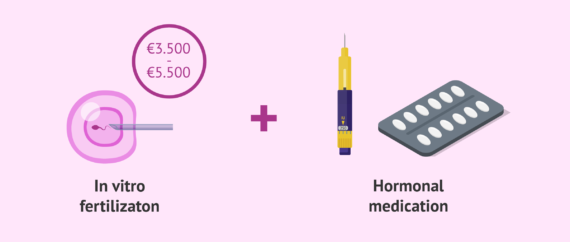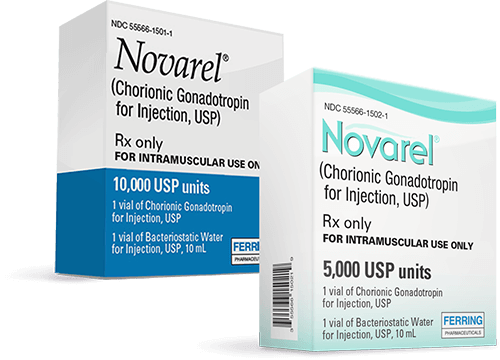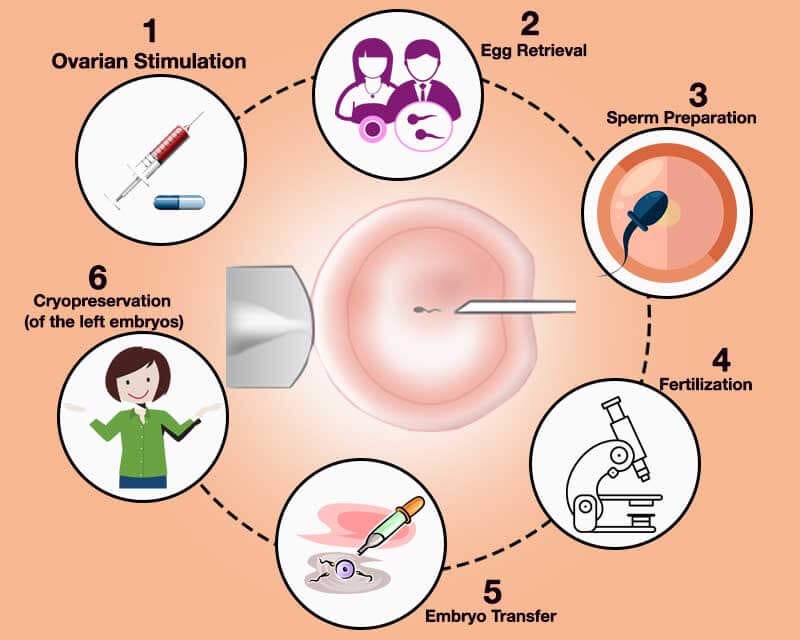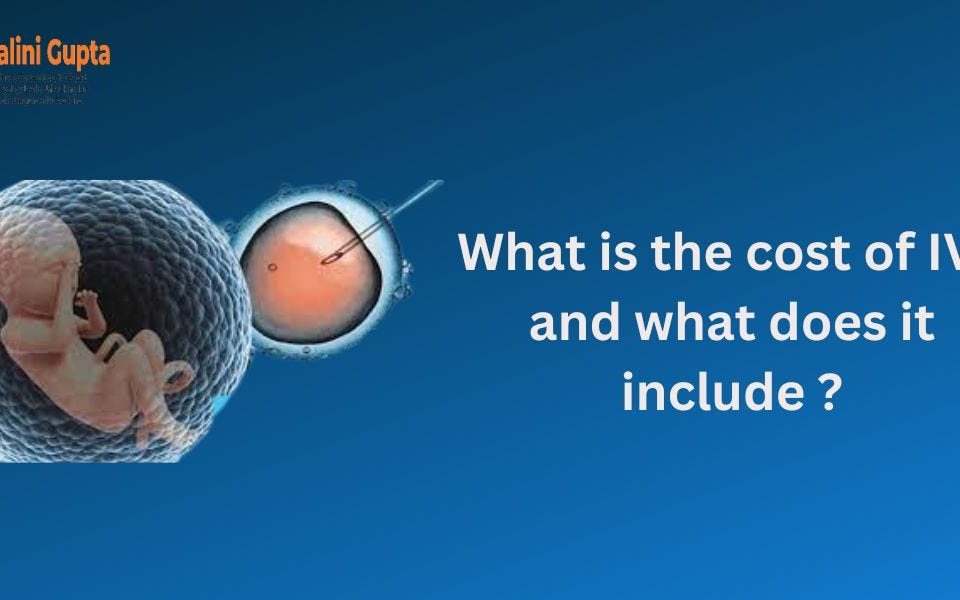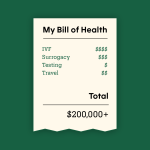
What Did the IVF Bill Contain? A Deep Dive into Its Purpose, Provisions, and Impact
April 21, 2025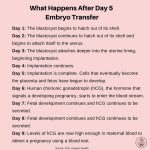
Is Blood Common After IVF 10 Days Post-Transfer?
April 21, 2025What Does IVF Cost? Your Guide to Understanding the Price of Fertility Treatment
In vitro fertilization (IVF) is a life-changing option for many hoping to build a family, but the cost can feel like a giant question mark. If you’re researching IVF, you’re probably wondering: How much will this really set me back? You’re not alone—millions of people ask this every year, and the answers aren’t always straightforward. IVF isn’t a one-size-fits-all price tag; it’s more like a puzzle with pieces that shift depending on where you live, what you need, and how your journey unfolds.
This guide is here to break it all down for you—think of it as your friendly roadmap to understanding IVF costs. We’ll dive into the numbers, explore hidden expenses, and share practical tips to make it more manageable. Plus, we’ll uncover some fresh insights you won’t find everywhere else, like how new trends and lesser-known options could save you money. Ready to get started? Let’s figure this out together.
The Basics: What’s the Average Cost of IVF?
IVF costs in the United States typically range between $12,000 and $25,000 for a single cycle. That’s the starting point most clinics quote, but it’s just the tip of the iceberg. A “cycle” means one round of treatment—everything from stimulating your ovaries to transferring an embryo. According to the American Society for Reproductive Medicine (ASRM), the average couple spends around $19,000 per cycle when you factor in the basics. But here’s the catch: most people need more than one try. Studies show the average patient goes through two to three cycles, pushing the total closer to $40,000–$60,000.
Why such a big range? It depends on a few things:
- Location: A clinic in New York City or Los Angeles might charge double what you’d pay in a smaller town.
- Clinic reputation: Fancy facilities with high success rates often come with a premium.
- Your needs: Age, health, and whether you use donor eggs or sperm can change the bill.
For example, a basic cycle might include monitoring, egg retrieval, lab work, and embryo transfer. But extras—like medications or genetic testing—can pile on thousands more. Let’s unpack those next.
Breaking Down the IVF Price Tag: What You’re Actually Paying For
IVF isn’t just one big bill—it’s a bunch of smaller ones that add up. Here’s a closer look at what’s inside that $12,000–$25,000 range, based on 2025 data and real-world trends.
Initial Consultation and Testing
Before you even start, you’ll meet with a fertility specialist. This first visit usually costs $200–$500 and includes a physical exam, blood tests, and maybe an ultrasound or semen analysis. It’s like the entry fee to figure out what’s going on with your body.
Medications
The drugs that kickstart your ovaries to produce eggs are a big chunk of the cost—anywhere from $3,000 to $7,000 per cycle. These aren’t optional; they’re the fuel for the whole process. Prices vary depending on your dosage and how your body responds. Some folks need more meds if their ovaries are slow to wake up, especially if they’re over 35.
Egg Retrieval and Lab Work
Once your eggs are ready, a doctor retrieves them in a quick procedure. This step, plus the lab magic where eggs meet sperm, usually runs $5,000–$8,000. It’s high-tech stuff—think of it like a science experiment with your future kid as the prize.
Embryo Transfer
Placing the embryo into the uterus is simpler but still costs $3,000–$5,000. If you’re using a frozen embryo from a previous cycle, add another $2,000–$6,000 for thawing and prep.
Hidden Costs You Might Miss
- Storage fees: Freezing extra embryos or eggs? That’s $500–$1,000 per year.
- Travel: If your clinic’s far away, gas, flights, or hotel stays add up.
- Time off work: Appointments eat into your schedule, and not everyone gets paid leave for this.
Here’s a quick table to visualize it:
| Step | Cost Range | What’s Included |
|---|---|---|
| Consultation | $200–$500 | Exams, tests, planning |
| Medications | $3,000–$7,000 | Hormone shots, pills |
| Egg Retrieval + Lab | $5,000–$8,000 | Surgery, fertilization |
| Embryo Transfer | $3,000–$5,000 | Placing embryo in uterus |
| Frozen Embryo Transfer | $2,000–$6,000 | Thawing and transfer (if applicable) |
Add it all up, and you’re in that $12,000–$25,000 ballpark. But what if you need more?
When IVF Gets Complicated: Extra Costs to Watch For
Sometimes IVF isn’t a straight shot. Your situation might call for add-ons that bump up the price. Here are the big ones people don’t always talk about.
Donor Eggs or Sperm
If your eggs or your partner’s sperm aren’t viable, you might use a donor. Donor sperm costs $1,000–$1,500 per vial, while donor eggs are a whopping $20,000–$45,000. Why so pricey? Egg donors go through their own mini-IVF process, and you’re covering that plus their compensation.
Genetic Testing (PGT)
Want to screen embryos for genetic issues? Preimplantation genetic testing (PGT) adds $3,000–$6,000 per cycle. It’s popular with older parents or those with a family history of disorders, and it’s becoming more common—up 15% in the last five years, per the Society for Assisted Reproductive Technology (SART).
Surrogacy
If you can’t carry a pregnancy, a surrogate might step in. That’s a whole different ballgame, costing $50,000–$200,000, including IVF, legal fees, and the surrogate’s payment. Posts on X in 2025 peg it at the higher end in places like California.
Multiple Cycles
Only about 30% of IVF cycles result in a live birth for women under 35, per the CDC. Success drops with age—down to 10% for women over 40. So, if the first try doesn’t work, you’re back at square one, shelling out another $12,000–$25,000. That’s why the total cost often climbs to $50,000 or more.
✔️ Tip: Ask your clinic for a “multi-cycle package.” Some offer discounts if you commit to two or three rounds upfront—think $30,000 instead of $45,000.
❌ Watch Out: Don’t assume insurance covers extras like PGT or donors—it rarely does.
Does Insurance Cover IVF? The Real Deal
Here’s the tough truth: most insurance plans in the U.S. don’t fully cover IVF. Only 20 states have laws mandating some fertility coverage, and even then, it’s spotty. If you’re lucky, your plan might chip in for meds or testing, but the big stuff—egg retrieval, transfer—is usually on you.
In 2025, California made waves by requiring insurance to cover IVF for all plans, not just employers with 100+ workers. That’s a game-changer, but it’s rare. Elsewhere, you might get $5,000–$10,000 in benefits if your employer opts in. Check your policy—look for terms like “infertility treatment” or “ART” (assisted reproductive technology).
Outside the U.S., it’s a different story. In France, IVF is free through public health for women under 43. Japan’s covering it via insurance now too, aiming to boost birth rates. Could the U.S. follow? Maybe—X users are buzzing about it after Trump’s 2024 IVF push, but nothing’s set yet.
✔️ Tip: Call your HR department. Some companies, like Starbucks or Google, offer IVF benefits even in states without mandates.
❌ Heads Up: Even with coverage, copays and deductibles can still hit $5,000+ per cycle.
How to Make IVF More Affordable: Practical Hacks
IVF’s expensive, but you’re not powerless. People are getting creative in 2025, and here are some strategies to lighten the load—plus a few fresh ideas you won’t see everywhere.
Shop Around
Clinics vary wildly in price. A small-town spot might charge $10,000 while a big-city one hits $20,000 for the same service. Look beyond your zip code—some travel a few hours to save thousands.
Fertility Tourism
Countries like Mexico, India, or Spain offer IVF for $5,000–$8,000, including meds. Quality’s solid—many clinics meet international standards. Add travel costs, and you’re still ahead. X chatter in 2025 shows a 20% uptick in Americans heading abroad for this.
Financing and Grants
- Loans: Companies like Future Family offer IVF loans with 0% interest for the first year—around $15,000–$30,000, paid monthly.
- Grants: Nonprofits like Baby Quest give $5,000–$15,000 to qualifying families. Apply early—funds run out fast.
Mini-IVF
This lower-dose option cuts med costs to $1,000–$3,000, dropping the total to $7,000–$10,000 per cycle. It’s less intense but works best for younger women with good egg reserves. A 2024 study in Fertility and Sterility found success rates only dip 5% compared to standard IVF.
Shared Risk Programs
Some clinics refund 50%–100% if you don’t get pregnant after a set number of cycles (usually 3–6). It’s pricier upfront—$25,000–$40,000—but peace of mind matters. Check fine print; live birth guarantees vary.
✔️ Try This: Split meds with a friend doing IVF at the same time. Leftover vials are common and safe to share if prescribed.
❌ Avoid: Super-cheap “deals” online—$5,000 cycles might skip key steps or use outdated tech.
Quick Quiz: What’s Your IVF Budget Style?
Take a sec to see what fits you:
- Are you okay traveling for cheaper treatment?
- A) Yes B) No
- Do you want a refund if it doesn’t work?
- A) Yes B) No
- Can you pay $20,000 upfront?
- A) Yes B) No
Mostly A’s: Fertility tourism or shared risk might be your vibe.
Mostly B’s: Stick to local clinics and look for grants or mini-IVF.
The Emotional Cost: What Money Can’t Measure
IVF’s price isn’t just dollars—it’s emotional too. A 2024 Stanford study found women who don’t conceive after IVF are 48% more likely to need mental health meds five years later. The ups and downs of hope, waiting, and maybe disappointment hit hard. Couples report stress over money fights too—60% say it strains their relationship, per a SIEPR survey.
One mom I heard about spent $80,000 over four cycles. She’d cry every time a bill came, but when her son was born, she said, “I’d pay it all again.” It’s a rollercoaster—plan for support, whether it’s a therapist or a friend who gets it.
✔️ Tip: Join an IVF support group online. They’re free and full of people who’ve been there.
New Trends in 2025: What’s Changing IVF Costs?
IVF’s evolving, and 2025’s bringing fresh twists that could shift your bill. Here’s what’s new—and how it might help.
AI and Tech Savings
Clinics are using AI to pick the best embryos, cutting down on failed cycles. A 2024 trial in Nature Medicine showed AI boosts success by 10% for women over 38. Fewer retries mean less money spent—some predict costs could drop 15% by 2030 if this scales.
Low-Cost Clinics
Pop-up IVF spots are sprouting in places like Texas and Florida, offering cycles for $8,000–$12,000. They skip frills (no fancy waiting rooms) but keep the essentials. X users rave about the no-nonsense vibe—same results, lower price.
Insurance Push
After California’s 2025 law, advocates are eyeing federal coverage. Trump’s team estimated IVF’s worth far outweighs its cost—$12,000–$25,000 vs. a lifetime of tax revenue from a new person. If it passes, your out-of-pocket could shrink to $5,000 or less.
Real Stories: What IVF Costs Look Like Up Close
Numbers are one thing, but stories hit different. Here’s what two families faced in 2025.
Sarah, 32, Ohio
- Cost: $45,000 over 2 cycles
- Details: Used mini-IVF ($9,000 each) plus standard ($20,000). Insurance covered meds ($3,000). Froze embryos for later ($1,000/year).
- Outcome: Pregnant with twins after cycle 2.
- Takeaway: “Mixing mini and standard saved us $10,000. Worth every penny now.”
Mark and Jen, 39, California
- Cost: $90,000 over 3 cycles + surrogacy
- Details: Two failed cycles ($25,000 each), then surrogacy ($40,000 base, $60,000 total with fees). No insurance help.
- Outcome: Baby girl born via surrogate.
- Takeaway: “We sold our car to afford it. Brutal, but she’s our miracle.”
Your IVF Cost Checklist: Steps to Take Now
Ready to dive in? Here’s a game plan to keep costs in check:
- Get a Quote: Call 2–3 clinics. Ask for a full breakdown—don’t skip the fine print.
- Check Insurance: Dig into your plan. Even partial coverage helps.
- Explore Options: Look at mini-IVF, travel, or grants. Compare savings.
- Budget Extra: Plan for at least $5,000 beyond the base—meds and surprises add up.
- Talk It Out: Chat with your partner or a counselor. Money stress is real.
✔️ Bonus: Save receipts—some states offer tax credits for infertility costs (up to $2,000).
Poll: What’s Your Biggest IVF Worry?
Vote below—it’s anonymous, and I’d love to hear your take:
- A) The total cost
- B) Hidden fees
- C) No insurance help
- D) Emotional toll
Beyond the Price: Is IVF Worth It?
So, what does IVF really cost? It’s $12,000–$25,000 per shot, sure, but it’s also time, hope, and maybe a few tears. For some, it’s a straight path to a baby; for others, it’s a marathon. A 2024 WHO report says 1 in 6 adults face infertility—IVF’s demand is only growing, and with it, ways to make it doable.
Here’s my take: it’s not just about money. It’s about what you’re building—a family, a future. If you’re weighing it, talk to someone who’s done it. Crunch the numbers, but listen to your gut too. And if you’re in the thick of it, you’ve got this—there’s a whole community rooting for you.
Your Turn: What’s Your IVF Plan?
Got a question or a story? Drop it in the comments—I’m here to chat. Let’s figure out what IVF costs for you.

